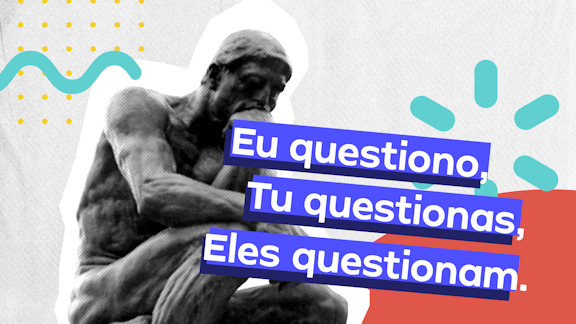Texto 2:
Are LED lights making us ill?
By Lucy Jones
Over the last decade, much of Europe and the US have changed the way they illuminate city and town streets. They
have replaced high-energy sodium bulbs (the warmer, yellow ones) with energy-saving LED bulbs (with a blue light
emitting diode, which can feel harsh in comparison). As well as street lights, most of us are exposed to blue light
through smartphones, computers, TVs, and in the home.
The World Journal of Biological Psychiatry published a paper that warned of the potential effects of LED lighting on
mental illness. It raised concerns about the influence of blue light on sleep, other circadian-mediated symptoms, use of
digital healthcare apps and devices, and the higher sensitivity of teenagers to blue light. Specifically, the researchers
are concerned about the relationship between light exposure and the occurrence of manic and mixed symptoms in
bipolar disorder, having adverse effects on manic states and the sleep-wake cycle. For example, the use of smartphones
or computers by those people before bed could have a bad effect on their sleep, circadian rhythms and health.
Studies of the impact of blue light on healthy adults show it inhibits melatonin secretion which disrupts sleep and can
affect quality of life, physical and mental health and susceptibility to illness.
Previous studies of sleep disorders in children and adolescents show a clear and consistent relationship between sleep
disorders and frequency of digital device usage.
Currently, the National Sleep Foundation guidelines suggest not using technology 30 minutes before bed and removing
technology for the bedroom. However, there are currently no specific guidelines for people with an underlying mental
illness or sensitivity to circadian disruption.
As LED technology has rapidly spread across the globe, the focus has been on the visual element and the energysaving element. Now, scientists, health professionals and the LED industry are working to minimise the blue light in
LEDs and create customisable lights that won’t harm those suffering from psychiatric disorders.
Disponível em https://www.bbcearth.com/blog/?article=are-led-lights-making-us-ill Acessado em 22/10/2018
A rápida substituição de lâmpadas comuns por lâmpadas de LED em todos os setores e locais tiveram duas razões
principais: a visual e a economia de energia. Porém, importantes estudos estão investigando se há consequências
deste uso para a saúde. Assim, de acordo com o texto, é possível dizer que:
Texto 2:
Are LED lights making us ill?
By Lucy Jones
Over the last decade, much of Europe and the US have changed the way they illuminate city and town streets. They have replaced high-energy sodium bulbs (the warmer, yellow ones) with energy-saving LED bulbs (with a blue light emitting diode, which can feel harsh in comparison). As well as street lights, most of us are exposed to blue light through smartphones, computers, TVs, and in the home.
The World Journal of Biological Psychiatry published a paper that warned of the potential effects of LED lighting on mental illness. It raised concerns about the influence of blue light on sleep, other circadian-mediated symptoms, use of digital healthcare apps and devices, and the higher sensitivity of teenagers to blue light. Specifically, the researchers are concerned about the relationship between light exposure and the occurrence of manic and mixed symptoms in bipolar disorder, having adverse effects on manic states and the sleep-wake cycle. For example, the use of smartphones or computers by those people before bed could have a bad effect on their sleep, circadian rhythms and health.
Studies of the impact of blue light on healthy adults show it inhibits melatonin secretion which disrupts sleep and can affect quality of life, physical and mental health and susceptibility to illness.
Previous studies of sleep disorders in children and adolescents show a clear and consistent relationship between sleep disorders and frequency of digital device usage.
Currently, the National Sleep Foundation guidelines suggest not using technology 30 minutes before bed and removing technology for the bedroom. However, there are currently no specific guidelines for people with an underlying mental illness or sensitivity to circadian disruption.
As LED technology has rapidly spread across the globe, the focus has been on the visual element and the energysaving element. Now, scientists, health professionals and the LED industry are working to minimise the blue light in LEDs and create customisable lights that won’t harm those suffering from psychiatric disorders.
Disponível em https://www.bbcearth.com/blog/?article=are-led-lights-making-us-ill Acessado em 22/10/2018
A rápida substituição de lâmpadas comuns por lâmpadas de LED em todos os setores e locais tiveram duas razões
principais: a visual e a economia de energia. Porém, importantes estudos estão investigando se há consequências
deste uso para a saúde. Assim, de acordo com o texto, é possível dizer que:
Gabarito comentado
Comentário da Questão – Interpretação de Texto (Reading Comprehension)
Tema central: O texto aborda os potenciais efeitos negativos da exposição à luz azul emitida por LEDs e dispositivos eletrônicos sobre sono e saúde mental, destacando, especialmente, os riscos para pessoas com distúrbios psiquiátricos.
Justificativa da Alternativa Correta – Letra A:
A alternativa A está correta pois o texto afirma claramente que cientistas, profissionais da saúde e a indústria de LEDs estão trabalhando para diminuir a luz azul destes dispositivos e desenvolver luzes adaptadas para não prejudicar pessoas portadoras de transtornos psiquiátricos. Essa iniciativa é uma resposta aos estudos que apontam o impacto da luz azul na saúde, especialmente em indivíduos sensíveis.
Estratégia para identificar a resposta: Atenção às expressões-chave no texto como "minimise the blue light", "create customizable lights" e à menção dos grupos afetados. Lembre-se de buscar conexão direta das afirmações das alternativas com o conteúdo explícito do texto.
Análise das Alternativas Incorretas:
- B: Incorreta, pois há comprovada relação científica entre uso de dispositivos digitais à noite e distúrbios de sono, como destacado no texto (“clear and consistent relationship” e “studies show”).
- C: Falsa, pois utiliza erroneamente o termo “melanina” (correto: melatonina), e a alteração não é pequena; o texto enfatiza uma inibição significativa da melatonina que prejudica o sono.
- D: Contrária ao texto, que afirma possíveis efeitos adversos da luz azul em pacientes bipolares. O texto fala em agravamento, e não em efeito calmante.
- E: O texto cita somente recomendações da National Sleep Foundation, não fala em manual oficial, nem apresenta regras formais.
Dica de prova: Preste atenção a termos técnicos (como “melatonina” vs “melanina”) e a informações diretas do texto: generalizações ou distorções costumam ser usadas como pegadinha em provas.
Conclusão: O tema exige leitura detalhada e habilidade de localizar ideias principais, causas e consequências no texto. Treine para desconfiar de termos absolutos ou detalhes fora do texto.
Gostou do comentário? Deixe sua avaliação aqui embaixo!






